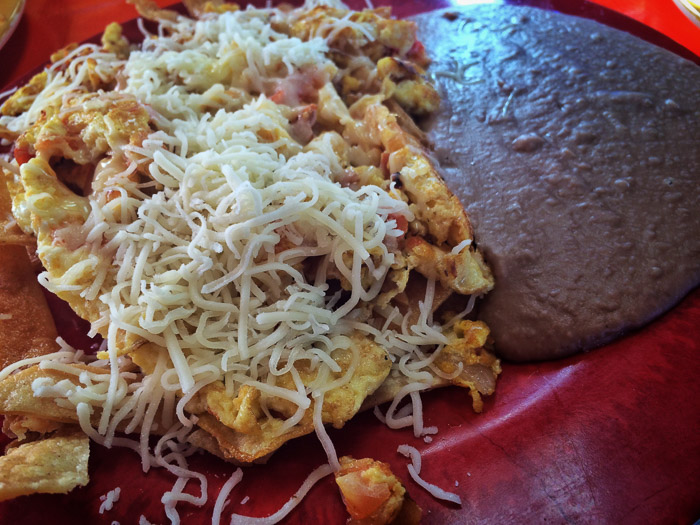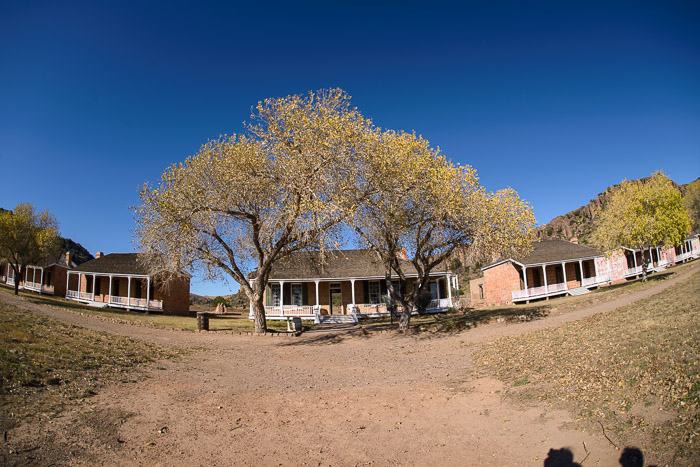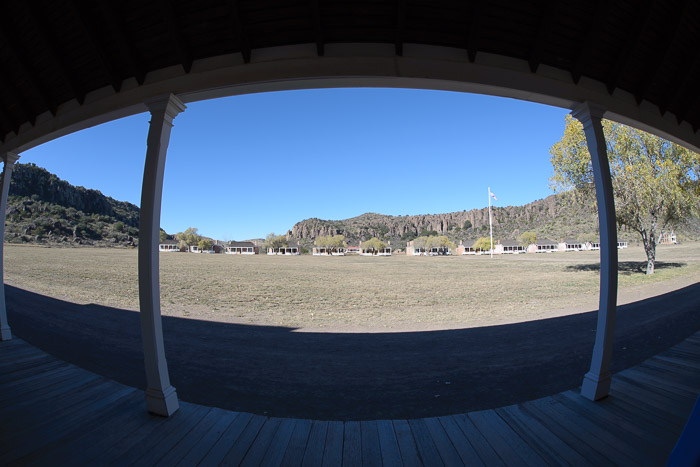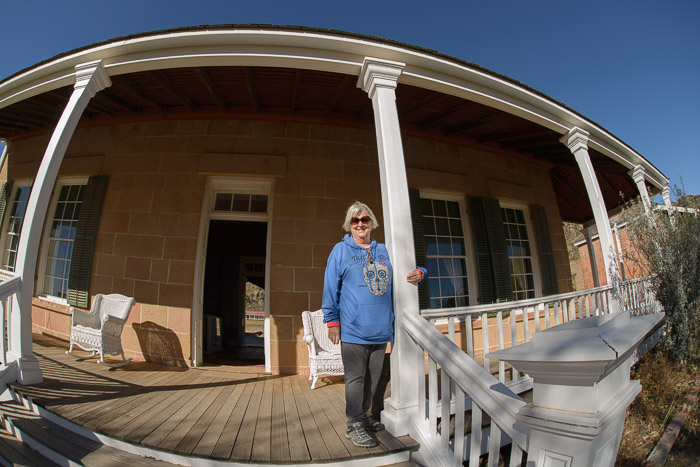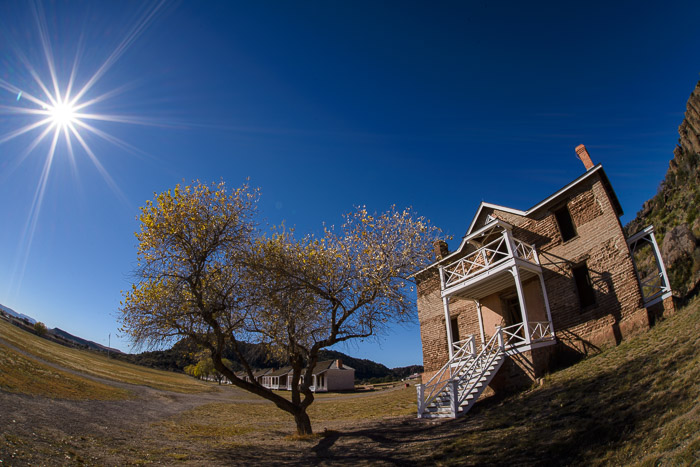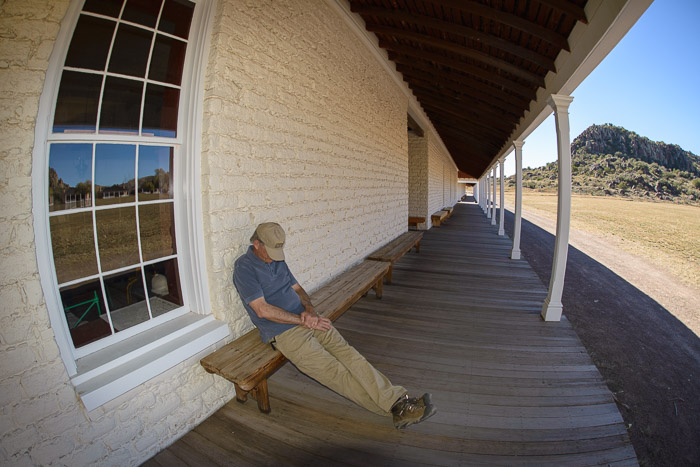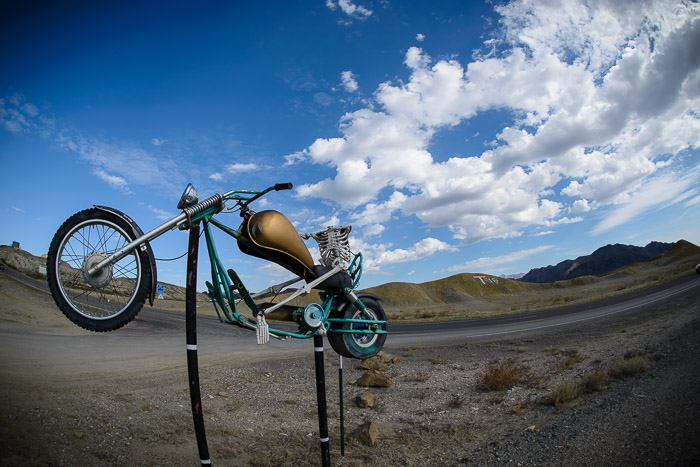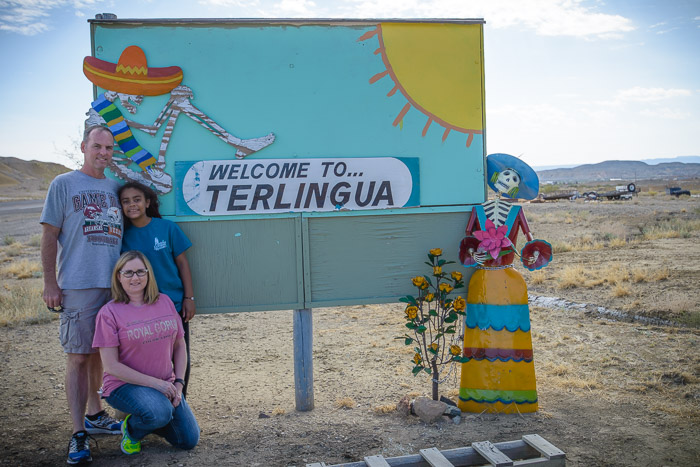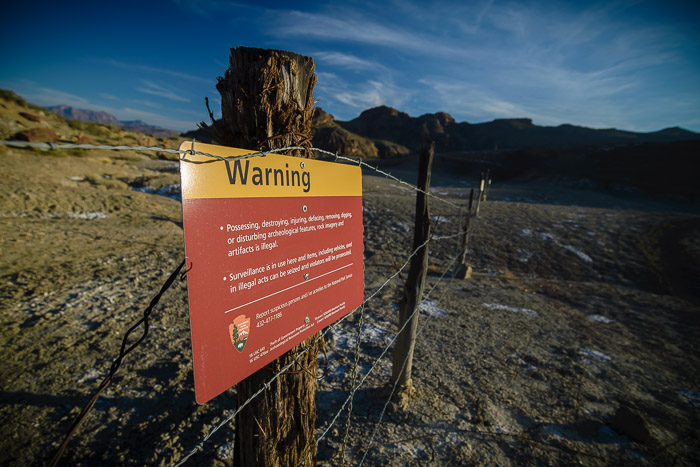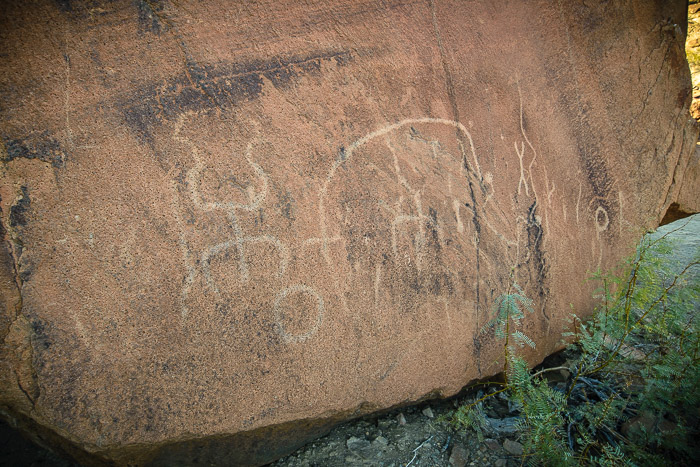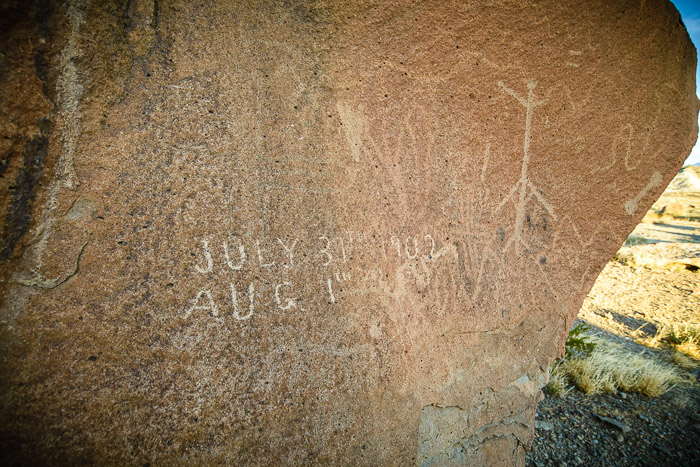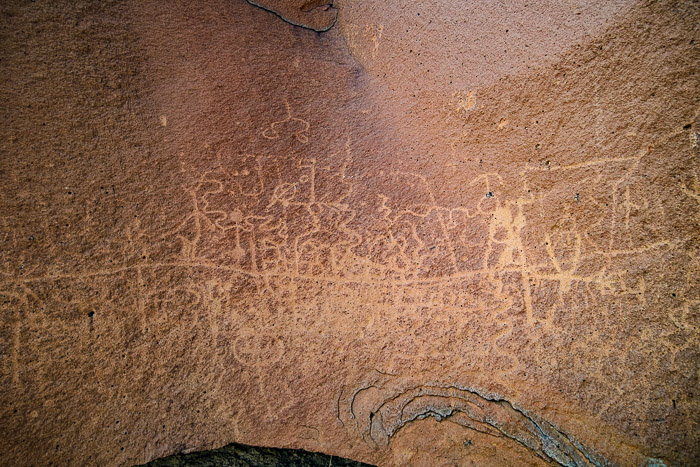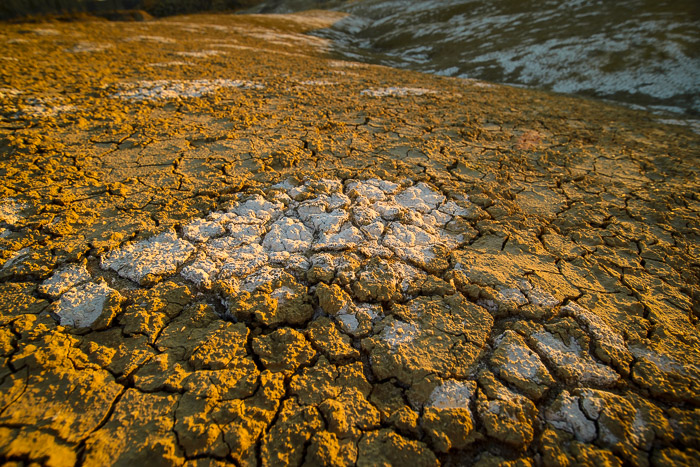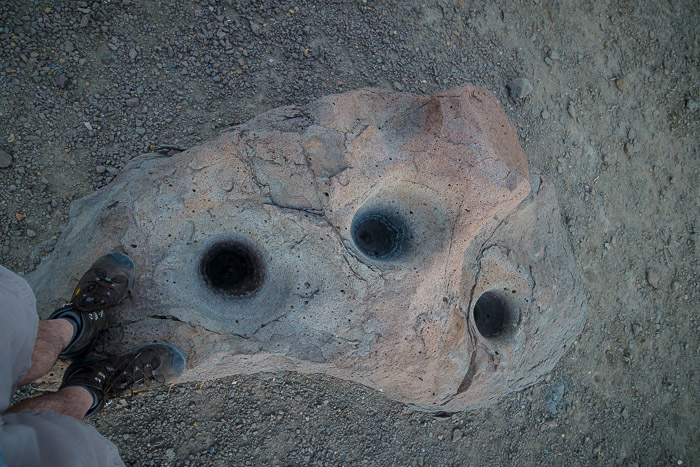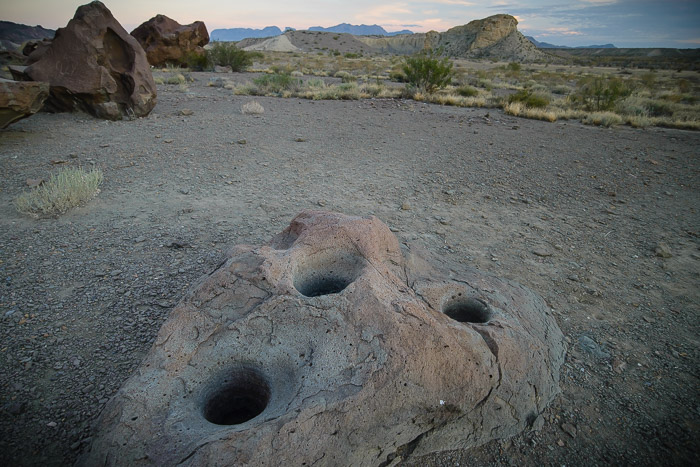After spending the night in downtown Ft. Davis, we hit the only place on in town that served breakfast, according to Google, where I had pretty authentic migas with refried beans. A solid 3 FPWs.
Then we went over to the Fort Davis National Historic Site, which is a restored frontier outpost dating back to the Indian Wars. It looks just like the set of every John Wayne-in-the-cavalry movie you’ve ever seen.
All the straight lines and open areas made it a good spot to play around with the rented fisheye lens.
Gramps channeled his inner Old West Beetle Bailey for this portrait.
As a museum, it’s a pretty immersive experience. Around noon we parted ways with Nana and Gramps, who headed back to Arkansas for more traditional Thanksgiving activities. We headed back down to the border to start the second half of the vacation, which we spent in Terlingua.
Terlingua is an isolated border town with a heavy Mexican influence and a famous Ghost Town, complete with a unique cemetery that is a tourist attraction in its own right. Skeletons and other Day of the Dead iconography are big in Terlingua. We hear it gets weird there at times.
After we got checked into our lodging, I proposed a short hike, but neither of my companions could bring themselves to leave the luxurious digs, so I headed out to an off-label site in BBNP that I had read about. This unofficial trail is reached by driving out a county road until it dead ends at the national park fence. The area is littered with prehistoric Indian artifacts, chiefly in the form of petroglyphs.
Huge boulders sloughed from a high ridge were apparently the perfect place to leave messages, histories and stories, judging from the dozens of examples along about a one-mile stretch of ridge bottom.
Although the area isn’t advertised in any park brochure, it’s a popular place. There is a clear trail along the flat below the ridge and I saw three groups of people milling about in my two hours in the area. Despite all the traffic, the petroglyphs are largely free from graffiti, this jackass from 1902 notwithstanding.
This panel is larger than the others and is on a giant curved boulder. It looks like it was so popular that the artists started carving over themselves. Anybody know what these people were saying?
As night approached, these white patches in the cracked desert soil really lit up. I don’t what the white stuff is, salt maybe.
On the way back I found these morteros, or mortar holes that the Indians created to grind grain in with wood or stone pestles.
